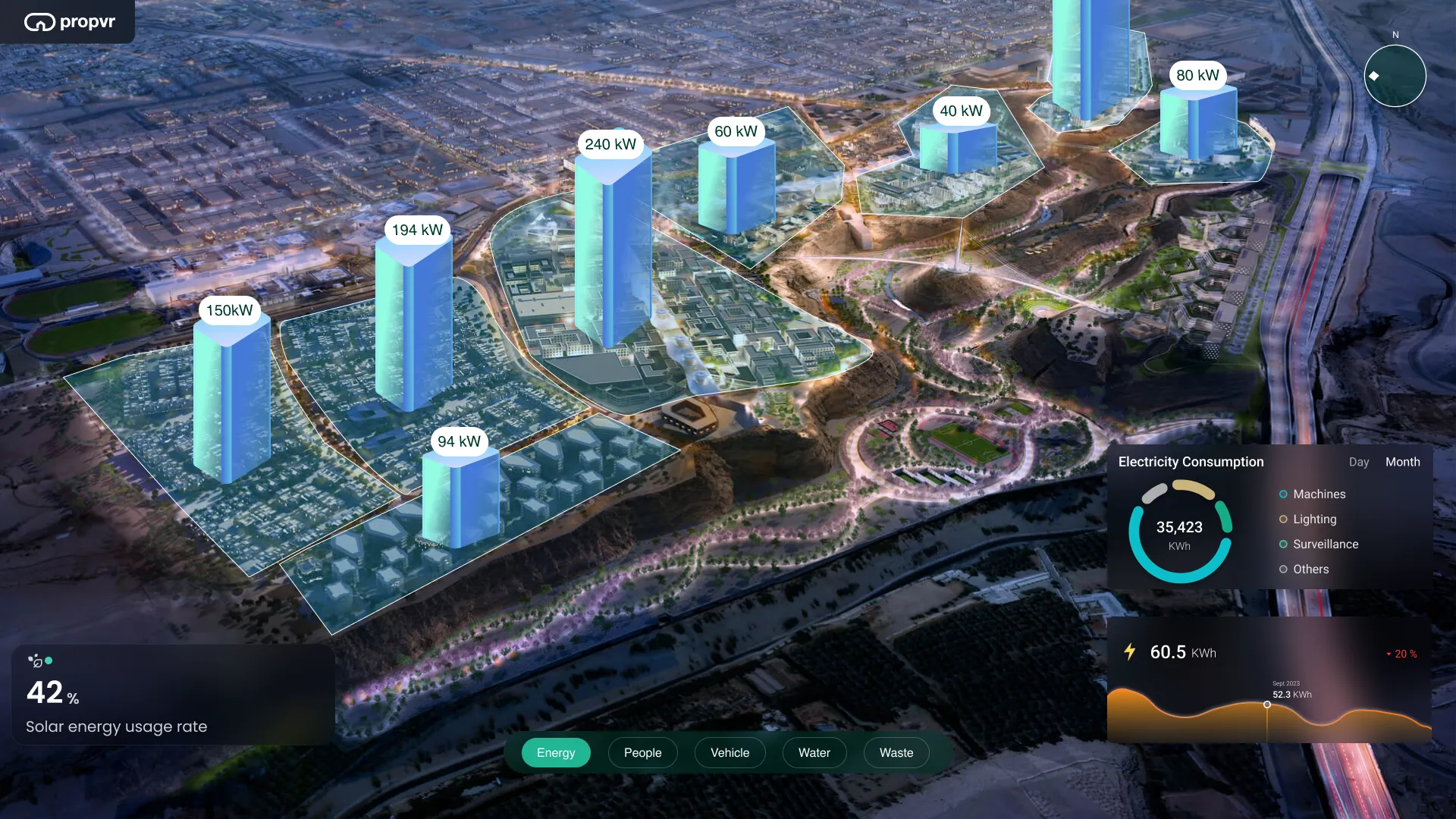Enhancing Energy Management with Digital Twins in Smart Cities
Introduction:
A smart city implemented Digital Twin technology to enhance energy management, aiming to reduce energy consumption, increase renewable energy adoption, and achieve carbon neutrality in preparation for COP28.
Scenario Analysis
The city faced challenges in managing energy resources efficiently and transitioning to renewable sources, leading to high energy costs and carbon emissions. Traditional energy management systems were limited in their ability to optimize energy usage and integrate renewables into the grid.

Product Integration and Benefits
- Real-Time Energy Monitoring: Digital Twins provided continuous monitoring of energy usage across the city, enabling identification of consumption patterns and opportunities for optimization.
- Renewable Energy Integration: The technology facilitated the integration of solar panels, wind turbines, and other renewable energy sources into the city's energy grid, increasing reliance on clean energy sources.
- Energy Demand Forecasting: Digital Twins analyzed historical data and predicted energy demand, allowing for proactive measures to balance supply and demand and optimize energy distribution.
Conclusion
The integration of Digital Twin technology improved energy management in the smart city, resulting in reduced energy costs, increased renewable energy adoption, and progress towards carbon neutrality. This achievement demonstrated the city's commitment to sustainability and its readiness for COP28.